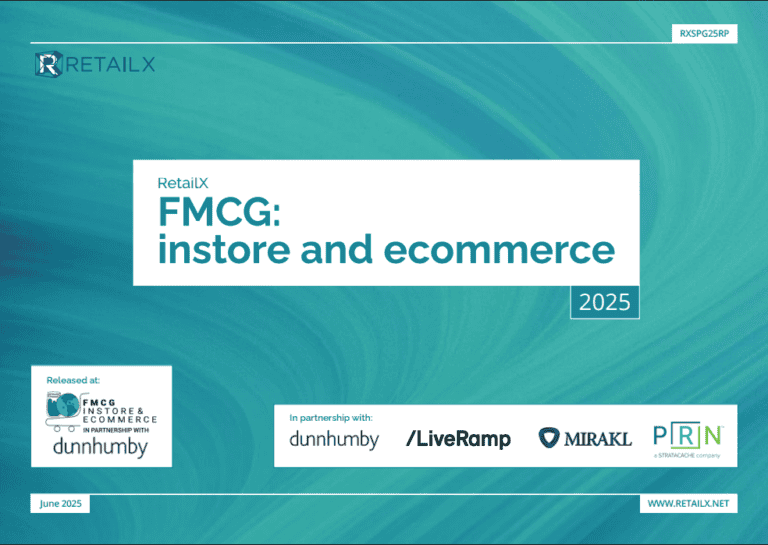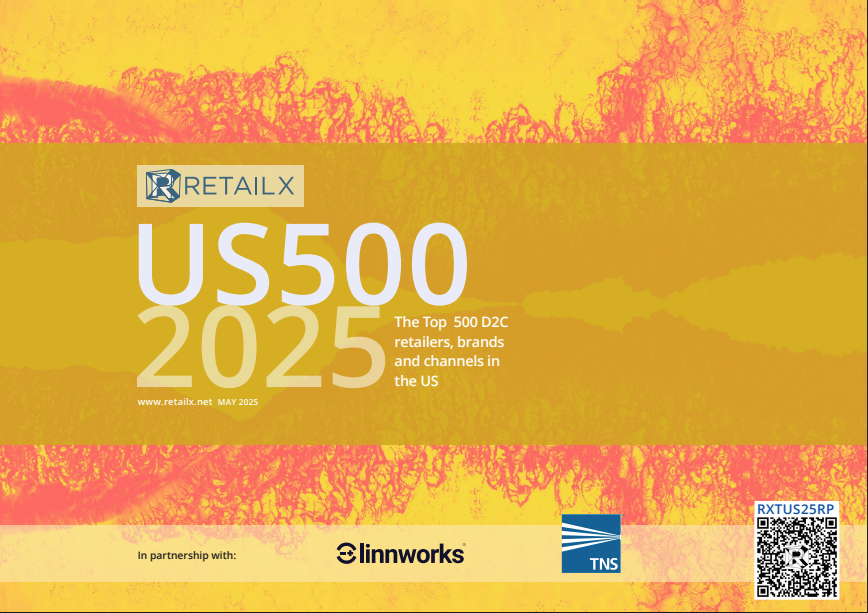Today we’re picking up our live blog on the Cyber Monday with regular reports on what’s occurring during the day. Cyber Monday has in recent years been the biggest online spending day ahead of Christmas. Has it now been eclipsed by Black Friday, or will the sales be spread across a longer time span? We’ll also be picking up reports on Black Friday shopping here that come in today.
Our research team continued to monitor site load times of the leading 100 UK retailers in the IRUK500 research. Here are the updates so far:
Saturday November 28, 7am-noon; Saturday 1pm-6pm; Saturday 7pm-midnight; Sunday November 29, 12 hours to noon; Sunday, 12 hours to midnight; Cyber Monday, November 30, 2am; Cyber Monday, 6am; Cyber Monday, 9am.
9am: Amazon.co.uk has said that Black Friday 2015 was its busiest ever day, with more than 7.4m items ordered over the course of the day – equivalent to 86 items every second. Its strategies included time-limited ‘lightning deals’, added every 10 minutes, as well as deals of the day that lasted all day, subject to availability. Black Friday Refreshed deals ran until Sunday night. “Throughout the year, we have been investing in more distribution centres and hiring many more great people in anticipation of our biggest Christmas period ever and, in particular, our biggest-ever Black Friday,” said Christopher North, managing director of Amazon.co.uk. “We are delighted that millions of customers loved the deals on offer.”
Marketplace seller Julian Garner, managing director of Inside Out Toys, said: “We knew that Black Friday Deals Week was going to be busy but we couldn’t have predicted just how amazing it has been. We’ve worked really hard to offer some great deals for customers and sales have been incredible, giving us a real lift as we head into what promises to be a busy Christmas period.”
9.30am SimilarWeb says that Black Friday traffic was 11% down compared to the equivalent day last year. It’s picked out some of the retailers that saw big traffic growth compared to last year, and to the previous day.
“The websites seeing the biggest year-on-year growth in traffic on Black Friday, based on combined mobile and desktop visits, were House of Fraser (+26.6%), Debenhams (+23.7%), New Look (+15%), Etsy (+15%) and Boots (+10%).
“The winners for one-day traffic growth on the day were John Lewis (+71%), PC World (+65%), Boots (+45%) and House of Fraser (+45%) – compared to visits from the previous day.”
The specialist in measuring web traffic also found that Amazon saw use of its app increase by 125%, followed by Argos (+115%). SimilarWeb also notes that both Amazon and Argos started their sales a week before Black Friday, with Argos achieving a 22% traffic rise in the run up to the sales day and a further one-day increase of 30% on the day itself. Amazon saw a 12% rise in the run up to Black Friday, and a further 30% boost on the day itself, as their strategies appear to have paid off.
Moshe Alexenberg, SimilarWeb director of digital insights said: “Year-on-year growth on Black Friday declined as retailers spaced their promotions over a longer period. Shoppers realise there are deals to be had before and after and seem to be holding out for the best bargains.
“We are seeing in the way that shoppers visit the sites that they are keeping an eye on deals and returning throughout the day. This year however has been the year of the app, with the leading sites providing a seamless service across their apps, mobile and desktop.”
10am: Personalisation and recommendations specialist Peerius monitored web traffic to 250 leading retailers and found that while traffic on Black Friday was up by 49% compared to the previous year, it also showed significant rises through the week, with Saturday (November 28) traffic up by 34% and even last Monday up by 21%.
Conversion rates were, however, lower, found Peerius on all days last week except Friday, when it rose by 7%. People using tablets had the highest conversion rate, double that of smartphone. But tablet traffic was up by 12%, year-on-year, while smartphone traffic was up by 86%. Between them, they made up 55% of online traffic, found Peerius, compared to 47% last year.
Yusuf Rahman, head of aalytics and optimisation at Peerius said: “As Black Friday coincides with the last paycheck before Christmas, shoppers want to ensure that they buy their presents at the right time on the right device and for the right price. This year, many retailers have tried to extend the Black Friday effect by discounting for a longer period in the hope of even better sales. Our analysis suggests that this activity definitely increased traffic on the days around Black Friday but shoppers still reserved their purchasing power for the day itself.”
10.15am: The latest figures from delivery management software company MetaPack suggest fast Black Friday growth. It says 963,754 parcels were processed across its platform on Friday alone, compared with 660,155 in 2014, a rise of 46%. For the full week to November 29, order volumes rose by 39% on the previous year. Last year they were up by 27% on the year before.
• Rob Fenton, UK managing director of business data agency fifty-five, says Black Friday is now certainly the biggest shopping day and that Cyber Monday will struggle to catch up. “Firstly, shopping fatigue sets in after Black Friday, as many consumers have already picked up all the bargains they need ahead of Christmas,” he says. “Secondly, it is hamstrung by its own name – primarily making it an online only shopping day. This means, retailers without a strong online presence, such as Primark, will pool all their deals and resources around Black Friday instead.
“This lag in popularity is highlighted by the fact in the UK Cyber Monday recorded sales of £720mn in 2014, nearly £100mn less than Black Friday.”
10.45am: InternetRetailing editor-in-chief Ian Jindal has captured the Cyber Monday home pages of the leading 23 retailers in the IRUK Top500 research, with a view to finding out how important the day is for retailers. You can see all 23 here, but we were particularly interested by many retailers’ decision that Cyber Monday was simply a continuation of Black Friday this year, while Asda continues not to join in with the event it helped to pioneer.
11am: Analysis from data-driven customer experience specialists Qubit found that Black Friday online traffic was 2.5 times higher than an average Friday, with twice the number of orders, while spend was 3.8 times higher. While each customer made the same number of purchases as on an average Friday, the average value of each was 88% up on last time, according to Qubit, which works with more than 200 ecommerce businesses around the world including 35 of the top 100 UK retailers.
Some 49% of page views came from computers on Black Friday, says Qubit, while mobile accounted for 32% and tablets for 19%. Orders, however, were 43% made on computers, whereas on an average Friday 32% of orders are placed on computers and 51% via mobile.
Qubit saw 12% of online traffic come between 8am and 10am, with 14% of all money spent in that time, and 44% of all money spent by midday.
“There is perhaps evidence that office workers saved themselves a spending a day’s holiday fighting for the most in-demand goods in store and instead exploited the sales promotions from their desks at work,” says Graham Cooke, founder and CEO of Qubit.
“In addition, mobile shoppers tend to buy fewer items and have smaller order sizes generally. While there is evidence of a general increase in customers using their mobiles to shop, people perhaps still prefer to buy big-ticket purchases that require more consideration on a computer as the experience for this kind of purchase still may not be right on smaller screens.”
• TrafficDefender continues to monitor the website performance of 115 traders this Cyber Monday morning: here’s their leaderboard for updates. As yet, it says, Cyber Monday is “snoozing along” with “more or less complete primary availability at present”. But, it says, lunchtime and early evening will provide the real test.
11.30am: PCA Predict aggregates data from its 10,000 UK retail customers to find out how shoppers are buying. It found that shoppers were ready and waiting as Cyber Monday dawned – this, after all, is payday for many. Its Big Data Labs found 176% more shoppers logged on between midnight and 1am to get their deals for the day, compared to an average shopping day in 2015. Traffic volumes between midnight and 8am were up by 9% on last year and 60% on an average 2015 day, it found.
On Black Friday, it found ecommerce activity rose by 16% despite a fall in high street footfall.
Jamie Turner, co-founder of PCA Predict, says: “Black Friday eclipses all other discount days and this year is no different as it surpassed 2014 transaction levels by 16%. While we see retailers continuing to slash prices online to prolong the shopping fever on Cyber Monday, this typically pales in comparison to Black Friday as shoppers are already spent.
“However, as today is also payday for many Britons, Cyber Monday ensures no-one gets left out of bagging bargains in the lead up to Christmas and we have already seen a 60% increase in online shopping before breakfast compared to an average day in the year.”
Here’s PCA Predict’s comparison of Cyber Monday by 8am today, compared with last year.
11.45am: Peerius’s Roger Doddy has sent over some nice charts showing the mobile, tablet and PC shopping use that it mapped on Friday. He says OS X users were the big spenders, spending £74 in average order values, according to Peerius data. By contrast, Android users spent £47 on average, while Windows users spent an average £60 and iOS an average £61.
He points out that “mobile visitors were going online at the crack of dawn, with the peak during the waking hours and the commute, between 6-9am, with another spike in the evening between 6pm and 8pm.”
Office workers then logged on between 9am and 10am.
while tablet users went online in the evening.
12 noon: Here’s the 12 noon update from our research team on site load times across the Top100 IRUK500 sites today. Ikea, Schuh, Argos, Currys Digital, Selfridges, H Samuel and Homebase have all been scoring well this morning.
12.15pm: Digital consultancy Salmon was the first to predict online shopping would top £1bn for the first time on Friday. Its CTO Glen Burson says the day was a success, and one that reflected retailers’ ability to prepare for the rush. “The most successful retailers are those that planned their peak operations strategy, briefing relevant departments to ensure all online trading and operations teams could anticipate surges and were ready to react,” he says. He adds: “We also saw retailers staggering deals gradually in the days leading up to Black Friday. This kept consumers shopping throughout the peak, not just on one day, whilst reducing strain on infrastructure and fulfilment teams. Black Friday is a great way to capture new buyers who visit their sites looking for deals, marketing to them over the wider peak period to build customer loyalty, grow their customer base and ultimately, increase sales. The retailers who were as prepared as possible, from front-end to back-end, have been the ones to triumph.”
12.20pm: Black Friday and Cyber Monday seem to have lost their in-store appeal
Black Friday may have turned over more than £1bn online but the official verdict seems to be that it was a flop in store, where footfall fell 4.05% year-on-year, according to retail intelligence specialist FootFall. Early findings from its FootFall UK National Index also finds that shopper numbers for the whole of Friday were down by 3.09%, week to date, year-on-year. The trend is expected to continue on Cyber Monday, a 0.5% fall in footfall predicted.
Steve Richardson, UK regional director at FootFall, said: “There seems to be a real loss of consumer appetite for Black Friday compared to last year – with shopper traffic down by just over 4% year-on-year. Of course, this could be an indication that people are simply switching their buying behaviours and going online to secure a deal. However, the drop in visitors in-store can also be attributed to retailers changing their Black Friday strategies and extending the promotional event beyond a single day of discounting.
“For instance, some major retailers, such as Asda, are scaling back participation entirely, while others are extending the promotion to ease pressure and spread out demand. Morrison’s, for example, are holding Black FIVEday, while Argos plan to extend offers over two weeks.
“By offering discounts over a longer period, retailers removed the immediacy on customers to ‘buy now to get a deal’, taking away the necessity to make a purchase on Black Friday itself, which is why we have seen a decrease in footfall – perhaps indicating that UK consumers are tiring of Black Friday and Cyber Monday all together.”
• Rupal Karia, managing director of retail and hospitality, UK and Ireland at Fujitsu, says retailers have changed their strategies to match a Black Friday that “could not have been any more different than last.” Karia says: “Instead of hitting the high street, digitally-savvy shoppers instead opted to browse in the comfort of their home – or workplace – with an estimated £1billion spent online compared to £885million last year.
“This shift represents an ongoing behavioural change in the consumer mindset when it comes to shopping; Digital Inside Out showed that nearly two-thirds of consumers see online shopping as the most valued digital service, a fact that retailers have woken up to.
“Instead of simply focusing on what worked last year – in-store – this year, retailers were prepared for heightened activity across all channels, giving consumers a far better shopping experience. Even with increased levels of online traffic, we saw less site outages thanks to retailers diligence. Retailers also staggered their deals throughout the week and are expected to continue to do so throughout the Christmas period, rather than focusing all of their resources into a single day and these retailers will reap the rewards in the year to come.
“This year, some were still viewing Black Friday as an in-store event and looking to Cyber Monday for a spike in online activity. Next year, as the lines continue to blur between online and offline retail, the chances are we’ll see them morph into the same event. But, however it is dressed, the fact remains the same, only by putting consumers at the heart of the business, personalising the shopping experience and simplifying the buying process, retailers can hope to win the battle for consumers’ hearts – whether that’s in-store or online.”
• But personalisation specialist Rich Relevance says shops will come into their own later on this Christmas shopping season. It asked 1,077 shoppers what they were looking for in-store this Christmas. Some 58% said shopping in-store gave them immediacy, while 51% said they looked for ideas and 35% were glad not to get unwanted surprises. Of all the features that the store offers, 60% said the most desirable was Click & Collect. “The high street store remains an anchor for Christmas shoppers – whether for inspiration, convenience or immediate purchase gratification,” said Matthieu Chouard, vice president and general manager of EMEA, RichRelevance . “Savvy retailers will recognise the opportunity to leverage their stores to deliver—or exceed—consumer demand for convenience and time savings this holiday season.”
12.45pm: Delivery matters
Thoughts are turning to delivery, after all those Black Friday and now Cyber Monday sales. Logistics consultants at LCP Consulting predict that £75m parcels ordered on Black Friday will be delivered late, while 4m more Black Friday next-day deliveries would put extra strain on retailers. Over the course of the Christmas shopping period, it says 17m parcels worth £695m would not arrive when the retailer said they would. On the upside, most parcels will arrive on time: LCP predicts that 22m parcels, worth more than £1bn, would be delivered to homes this week, but that 2.2m of these would not arrive when the retailer said they would.
Stuart Higgins, retail partner at LCP Consulting, says: “Retailers continue to pursue a faster and freer agenda which is simply placing too much pressure on their back end infrastructure and carrier partners to deliver. With one in 10 deliveries risking failure this Christmas, retailers need to ensure they don’t promise what they can’t deliver or the customers will simply find a competitor who can.”
• Shopatron, specialist in distributed order management, continues on this theme, having carried out research that suggest more than half of Britons plan to use home delivery ahead of Christmas, and a third would use click-and-collect. John Pincott, European MD at Shopatron, said: “Many retailers have learnt lessons from last year when delivery networks crippled under the unexpectedly high volumes of packages sparked by the festive sales. How to get orders fulfilled and into the hands of consumers effectively and in a way that’s most cost-efficient should be front-of-mind – not just for now, but also because of the effect it can have on their long-term reputation.”
4.30pm: John Lewis says it had its biggest-ever online sales day on Black Friday, with sales 11.9% up on the same day last year. Its website was busiest on Friday, when sales peaked between 9am and 10am at 4.9 orders per second. But on Saturday store sales were 9.3% up on the same time last year. Distribution teams processed 18% more parcels on Friday, Saturday and Sunday compared to the same time last year, with five parcels per second packed during its peak hour.
Mark Lewis, retail director at John Lewis, said: “Black Friday itself marked a record day for John Lewis and strong trade continued into the weekend. On Friday online trade really stepped forward, while shops saw their biggest increases over the weekend, showing that more than ever customers like to mix and match channels to shop in the most convenient way for them.
“The key story of the weekend was the success of our distribution operations, which have proved that we can manage the highest peaks of demand at Christmas, so that customers can be confident when they shop with John Lewis for their gifts.”
4.45pm: IMRG says that this Black Friday weekend was very different from that seen last year, when orders were packed into a very tight timeframe. This year, customers stayed away from the shops, and many extended their online campaigns over the course of a week.
It cited House of Fraser chief customer office Andy Harding, who said Black Friday was now a key part of the retail calendar. “The response has been overwhelmingly positive,” he said, seeing 120 orders a minute through its website on Black Friday, with trade up by 40%.
5pm: Parcel collection business Doddle saw parcel volumes peak on Saturday, with a 122% increase. Chief executive Tim Robinson said: “Our earlier prediction that retailers would push discounts live earlier and make them last for longer proved to be true last week, with many launching their Black Friday deals on the 23rd, some of which are still running. Across our own store network we experienced a 42% increase in weekly volumes last week, with each successive day showing a larger percentage increase compared to the previous week as consumers took advantage of pre-Black Friday deals. Saturday showed the largest week-on-week increase, at 122%. Over 75% of Saturday’s volume came from parcels arriving into Doddle stores on next day services. This volume of next-day deliveries proves that the self-gifting phenomena makes Christmas delivery cut-offs irrelevant for these customers, with as many as 40% of Black Friday shoppers buying for themselves they want to get hold of their new goods quickly.
“In terms of what many are reporting to be a ‘quiet’ Black Friday, we are delighted that unlike last year, the aggressive scenes associated with Black Friday have failed to materialise in UK retail stores. Consumers have opted to ditch the queues and secure bargains by shopping from the comfort of their home or office, online.”
Tuesday December 1
12 noon: Retail intelligence agency FootFall says visitor numbers to UK high streets were down throughout the weekend. Across the weekend numbers fell by an average of 5.29% compared to the equivalent weekend last year, and on Cyber Monday they were down by 5.8%. The numbers in detail: Black Friday -4.05; Saturday November 28 -6.14%; Sunday November 29 -5.17; Cyber Monday (November 30) -5.8%.
Steve Richardson, UK regional director at FootFall, said: “Certainly in terms of driving shoppers into store, we’ve seen a real decline in participation on both Black Friday and Cyber Monday compared to last year – with shopper traffic down an average of 5.29% across the discounting period. This is an indication of changing buying behaviours, as consumers increasingly head online to secure a deal.
“However, as much as consumers are changing the channel in which they shop, increasingly moving towards online, this year marks a real shift in how retailers are approaching their discounting strategies around Black Friday and Cyber Monday, with many extending the promotional event beyond single discounting days.
“With many retailers now discounting over longer periods, some even up to two weeks, the impulsive nature that single days of flash sales, as we saw last year, has been removed, making consumers less likely to rush into store to secure a bargain, which is why we have seen a decrease in footfall.”
Wednesday December 2
We have some final round-ups to share in our Cyber Monday blog, but then we’ll be reverting to the Christmas rolling report.
• Adobe says UK consumers spent £591m online over the 24 hours of Black Friday shopping deals, 24% more than the same time last year. Of that, 21% of sales were made via tablet computers, and £242m was spent on mobile devices, up from £217m last time. Black Friday shoppers, according to Adobe’s analysis of 36m online visits in this country, spent an average of £10.06 each, compared to £6.66 in the US.
• The number of orders processed for delivery rose by 45% over the Black Friday weekend, compared to the equivalent weekend last year, according to delivery management software company MetaPack said it had its busiest-ever day on Cyber Monday. “Year on year, parcel volumes over Black Friday and Cyber Monday continues to rise and this trend shows no signs of abating,” said NetDespatch’s Matthew Robertson, commercial director.
“In addition the weekend between the two days has created a shopping ‘long weekend’. This year was the busiest the NetDespatch platform has witnessed, with 78% higher parcel volumes than the previous Saturday and Sunday and 34% higher than the same time last year.
“The figures we are seeing fully support widely reported views that shoppers have now more than ever taken to buying goods online, ahead of going in-store. Cyber Monday was the busiest day in NetDespatch’s history and in fact was a massive 14% up on Black Friday. Even the days after Cyber Monday we are still seeing a peak of 1800 orders being processed per minute on the NetDespatch platform.”
But he said sales had been spread across the whole week rather than falling solely in two ‘tsunami’ days. That had eased “the strain on every part of the supply chain, enabling retailers to sell more, carriers to manage delivery expectations and consumers to continue to shop with confidence. With sales now extending into the first week of December, we expect not to see a dip in volume, but instead a ‘peak plateau’ carrying on towards Christmas.”
• Shopping centre operator intu both footfall to its shopping centres and online traffic to its intu.co.uk affiliate shopping website. It said more than a million people visited its shopping centres across both Black Friday and the next day, Saturday, while 125,000 logged on to the site, with a spike at 11.22am.
Trevor Pereira, commercial and digital director at intu said: “Cyber Monday lived up to the hype this year, with a record number of visits and purchases compared to last year. Customers really made the most of the multiple channels to secure products, using both our shopping centres and online website from Friday through to Monday to tick off items on their shopping list.”
• Surfwear brand Saltrock said its Black Friday sales were up by 109%, year-on-year, with online sales up by 192% over the cyber weekend. “Mobile is now our best converting and highest average order value device type, with YoY uplift of 2,274%,” said Saltrock’s head of digital and marketing, Richie Jones.
“The average time on-site was 3 mins 30 seconds per visitor on Friday, and 3 minutes 50 seconds across the whole cyber weekend event. These are shorter sessions compared with other weekends, meaning customer behaviour was impacted by the impulse and desire to grab a bargain.”
Marketing tactics included flash sales supported by social, eCRM and a targeted content marketing campaign, driving traffic volumes up 40% on Black Friday and a whopping 125% over cyber weekend. Jones said: “Our busiest day was without doubt Friday, and our busiest hour was between 9am and 10am. However we also saw a huge influx of traffic on Saturday, Sunday and Monday, too.”
Marco Vergani, vice president and general manager of Europe and the Middle East at Digital River , said: “The biggest winners on Black Friday were the retailers that looked beyond offering deep discounts and flash sales and actively took steps to deliver a total customer experience. This includes managing multi-channel touch points, optimising mobile sites, localizing online payments, handling cross border compliance, ensuring site uptime and more. As consumer expectations around convenience, quality and personalization rise, “good” shopping experiences are no longer good enough. Even something as simple as page load times can impact buyers’ decisions to shop on one site versus another.
“Merchants with ecommerce sites that may have missed a beat during this year’s big shopping event, need to remember that holiday preparations aren’t exclusive to Black Friday. Cyber Monday and the very next day, Tuesday are among the season’s biggest online shopping days. In fact during the past few years, the Monday following Cyber Monday also has been one of the biggest spending days for online shoppers. During this holiday season, smart ecommerce practitioners will make sure their sites are fully prepped to not only compete for shopper dollars and the short-term sale, but also convert deal seeking visitors into loyal, long-term customers.”












